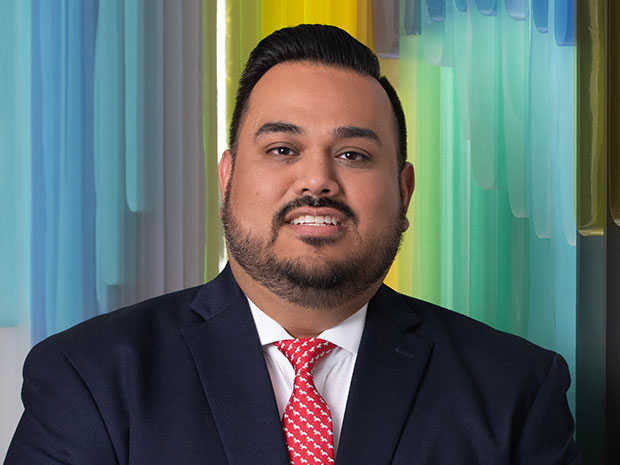Economists forecast the Federal Reserve will continue raising interest rates in the future.
The potential ripple effect across the banking landscape should be closely watched.
Take action now to mitigate possible financial risk by reevaluating banking relationships.
As an ultrahigh net worth individual (UHNI), closely held private business or family office, the current banking turmoil and tightened lending environment may have you reevaluating your banking relationships and risk.
Since early March, several high-profile financial institutions have folded due to a confluence of factors including liquidity constraints that followed ongoing interest rate hikes from the Fed and the banks’ significant concentration in technology, innovation and cryptocurrency clients.
Economists forecast that the Fed, which held interest rates steady at its June meeting after a series of 10 consecutive hikes, will again resume rate increases and the potential ripple effect across the banking landscape should be closely watched. Already, we watched the cost of funds rise dramatically during the first quarter of 2023. Deposit costs went up 43% and the cost of Fed funds purchased went up 29%, according to the Federal Deposit Insurance Corporation (FDIC). Meanwhile, financial institutions’ liquidity ratio decreased by 23% when compared to financial results before the Fed’s rate hike campaign.
If rate increases continue and you are concerned about your current banking situation, consider taking the following actions to help mitigate financial risk:
1. Evaluate your financial institutions – Consider your bank’s health, the adequacy of its capital buffer and whether it has ample credit to draw on in case a bank run occurs. Questions to ask your bank include: Do you have any concentrations that are more risk-tolerant? Have you mitigated your repricing and duration risk in light of the rising rate environment? With credit risk related to commercial real estate becoming more of a focal point, have you incorporated appropriate mitigation activities?
2. Diversify your cash savings – It is wise to have accounts at more than one bank backed by the FDIC in case there is ever an issue with your primary financial institution. With deposits protected up to $250,000, opening additional FDIC-insured accounts will provide 100% certainty that your money is safe despite what turmoil may lie ahead. However, diversifying your accounts is a time-consuming approach that is unrealistic for the large balances that UHNIs carry. Banking with institutions that participate in programs such as the Certificate of Deposit Account Registry Service, MaxSafe, Depositors Insurance Fund and Insured Cash Sweep (offered to banks in the IntraFi network) is another common approach to help safeguard your cash.
3. Consider alternatives to banking – Look at short-term vehicles such as Treasurys, money markets and other instruments, which have been much more agile in incorporating the Fed’s rate hikes compared to traditional institutions and have the added benefit of 4─5% interest rates with a low level of risk. It is worth noting that total money market fund assets have increased by $770 billion in 2023 as reported by Investment Company Institute. Additionally, as lending from traditional institutions becomes more selective and naturally begins to dry up, private credit and the secondary lending market will become more prominent. Thirty-one percent of executives polled in the Q2 RSM US Middle Market Business Index Survey found access to credit more difficult, up from 27% in the prior quarter.
4. Assess your portfolio – The banking disruption and prolonged market uncertainty have made it critical to stay on top of investment portfolio risk, calling for increased communication and transparency from fund managers. Your portfolio’s risk profile may have changed since inception, so understanding the specifics around debt terms, expenses, distributions and cash-on-cash returns is important. Closely monitor commercial debt maturities, as many have floating-rate debt that may need refinancing in a restricted debt market. While real estate investments have performed well in the current inflationary environment due to rent growth, first-quarter year-over-year rent data suggests a slowdown in rent growth in some markets, including once-hot Sun Belt metro areas, which could negatively affect investment loans with a higher debt service coverage ratio.
5. Look for opportunities – Liquidity and fair values have been affected by the Fed’s unusually aggressive campaign of sharp interest rate hikes to tame inflation. While the tightening of the lending market has stagnated deal flow and institutional investor activity, the current environment has created a unique opportunity for private investors to invest in deals that were previously difficult to enter. According to Prequin data, fundraising in mezzanine debt accounted for 64.9% of private debt capital raised in the first quarter of 2023 as banks pulled back and opened the door for rescue capital to come in as a lender or equity position.
Proactive management of banking relationships is crucial for mitigating risk and safeguarding assets. By asking pertinent questions, assessing portfolios, and closely monitoring the Fed’s actions regarding interest rate hikes and inflation, investors can make informed decisions that fortify their financial well-being.
RSM contributors
Quarterly webcast series
Join us for our four-part webcast series centered on operational excellence in the family office. This complimentary CPE-qualified program provides unique insights and strategies to help family offices adapt and plan for long-term impacts.
Family Office Insights
Family Office Insights brings you the most recent trends and updates to inform family office professionals and family members. Subscribe today for information that helps family offices navigate challenges and opportunities with confidence.



